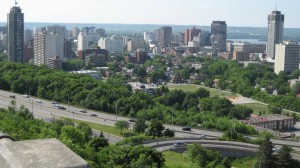There will be an Open Data Jam (#ODJAM2014) in Hamilton on November 21-23, 2014. This is an opportunity for community leaders and developers to collaborate on applications that can showcase Hamilton as a beacon of Open Data and software development.
What is open data? Why is it important to the average person? What can we do with this information?
Open Data is part of the Open Government mandate. Open Government is a multi-country initiative to increase transparency for citizens into the actions of their government. This includes access to departmental budget and spending information, public policy-making, access to information (statistics) that each government department has obtained, open access to government sponsored research, and, in some countries, access to expenses of elected officials. Also a part of open government is a movement to increase involvement in the governing process through online tools which provide the electorate direct input to government decisions.
These goals will help restore faith in governments, at federal, provincial, and city levels.
Open Data gives access to different types of government “owned” information, such as census, traffic, construction, road closures, demographic, realty tax, parks, transport of government regulated materials, electric power creation and consumption, departmental budgets and spending, elected official attendance and voting records. All of this information is kept at all levels of government in Canada. Currently part of this information is available, more will be made available over the next few years, according to the Open Government 2.0 mandate.
This means that Canadians have the opportunity to scrutinize the information that the governments have been collecting, maintaining and using for public policy. This can help us understand some of the decisions being made at various levels of government. This sets a level of accountability for our elected officials and civil servants that is important for them to regain our trust.
An economic opportunity is also available. Mobile applications, web sites, and data analytics are potential uses of the data available. In Hamilton, the HSR transit feed is live, allowing developers to create mobile applications and websites that assist commuters to take transit. Other data, such as water park location and capacity, could be used in conjunction with HSR information to help people find water parks in the summer. Transit feeds across multiple cities could help commuters who have multi-city travels ensure that they are arriving on time for actual departure times (not scheduled times). Co-ordination of traffic data, construction and closure data could be used to help drivers avoid high congestion areas to reduce idling engines. The possibilities are limitless.
The Federal Government’s Open Data catalogue is here: Government of Canada
The Government of Ontario’s Open Data catalogue is here: Government of Ontario
The City of Hamilton’s Open Data catalogue is here: City of Hamilton
The political implications of Open Data are staggering to a populace who is weary of perceived political abuse and corruption. The accountability of politicians, lobbyists and civil servants will help ensure Canadians are being served in the public’s best interests. The economic implications are just as staggering – allowing start-up companies to use the data to create sustainable jobs, to create a reputation and to develop their skills. These skills can start local – with Hamilton’s open data events, but can scale to provincial, national, and even international scales with the right amount of ingenuity and marketing foresight.
signup for #ODJAM2104 here: ODJAM2014


